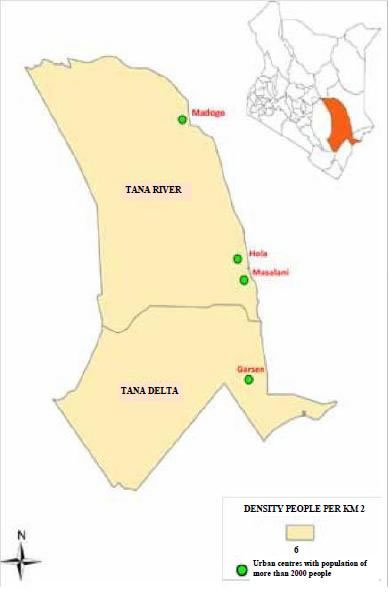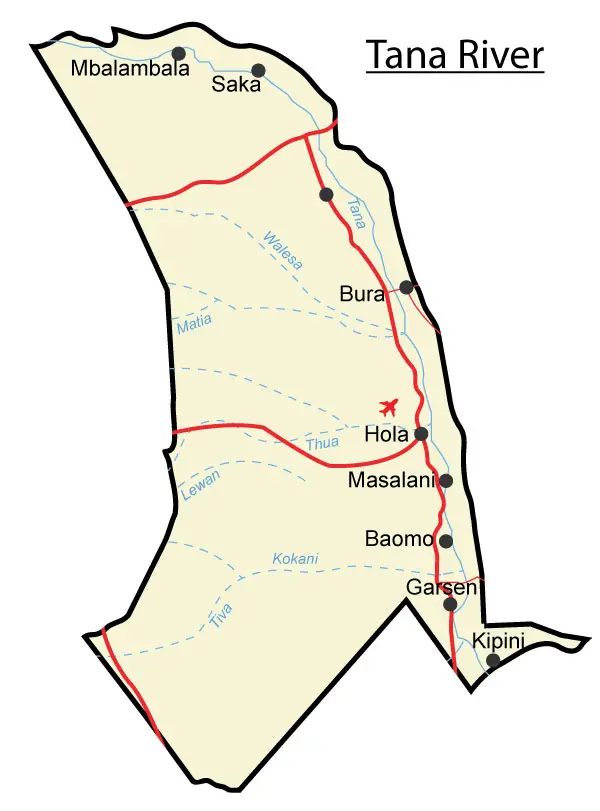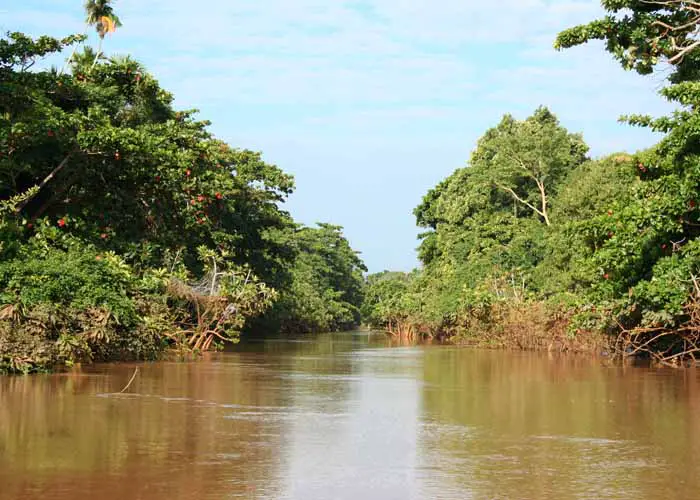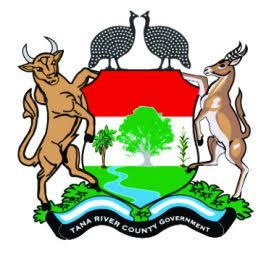Tucked away in the southeastern part of Kenya lies the serene and captivating Tana River County. With its picturesque landscapes, vibrant culture, and rich biodiversity, this hidden gem offers a getaway like no other. From the majesty of the Tana River to the vibrant markets where locals showcase their crafts, the county is a treasure trove waiting to be explored. Whether you’re an adventure enthusiast seeking thrilling water sports or a nature lover yearning for a glimpse of elusive wildlife, Tana River County has something to offer every traveler. Come immerse yourself in the beauty of this enchanting destination and create memories that will last a lifetime.
Geography
Location
Tana River County is located in the southeastern part of Kenya, bordering the Indian Ocean to the east. It is situated between latitudes 1°7’30″S and 2°47’30″S and longitudes 38°7’41″E and 40°25’11″E. The county covers a total area of approximately 35,375 square kilometers, making it one of the largest counties in Kenya.
Physical Features
The landscape of Tana River County consists of a diverse range of physical features. The county is crossed by the Tana River, which is the longest river in Kenya. The river plays a vital role in the county’s agriculture and water supply. Tana River County also encompasses part of the Tana Delta, which is a vast wetland and is known for its unique biodiversity. The delta is home to various animal species, including hippos, crocodiles, and numerous bird species. Additionally, the county is characterized by expansive savannah grasslands and arid landscapes.
Demographics
Population
As of the latest census, Tana River County has a population of approximately 315,943 people. The population is predominantly rural, with the majority of the inhabitants residing in villages and farming communities. Tana River County has experienced steady population growth over the years, fueled by factors such as natural increase and migration from other parts of Kenya.
Ethnic Groups
Tana River County is home to several ethnic groups, each with its own unique traditions and cultural practices. The main ethnic communities include the Pokomo, Orma, and Wardei. The Pokomo people, who are the largest ethnic group in the county, are known for their expertise in fishing and agriculture. The Orma and Wardei communities mainly engage in livestock farming and trade.
Languages
The primary languages spoken in Tana River County are Pokomo, Orma, and Wardei. Swahili and English are also widely spoken, serving as the official languages of Kenya. The linguistic diversity of the county reflects the cultural richness and heritage of its various ethnic communities.

This image is property of opencounty.org.
History
Colonial Era
Tana River County has a rich history that dates back to the colonial era. During this period, the region was under the administration of the British colonial government. The river served as a vital transportation route, allowing for the movement of goods and people between the hinterland and the coast. The colonial presence in the region also influenced the socioeconomic and political dynamics of the local communities.
Independence and Post-Independence
Following Kenya’s independence in 1963, Tana River County became part of the newly established Kenyan government. The county, like many others in the country, faced numerous challenges during the early years of independence. However, concerted efforts by the government and local communities have led to significant progress in areas such as infrastructure development and access to education and healthcare.
Government and Administration
Governor
The county government of Tana River is headed by a Governor, who is elected by the residents of the county. The Governor is responsible for the overall administration and development of the county. They work closely with other elected officials and government agencies to implement policies and programs that promote the welfare of the residents.
County Assembly
Tana River County has a County Assembly, which consists of elected Members of County Assembly (MCAs). The County Assembly plays a crucial role in legislative matters, including the enactment of laws and regulations that govern the county. The MCAs represent the interests of the residents and participate in decision-making processes that affect the county.
Sub-Counties
Tana River County is divided into sub-counties for administrative purposes. The sub-counties include Garsen, Bura, and Galole. Each sub-county has its own administration and is headed by a sub-county administrator. The decentralization of governance has brought services closer to the people, allowing for effective and efficient delivery of public services.

This image is property of elimufeynman.s3.amazonaws.com.
Economy
Agriculture
Agriculture is a major economic activity in Tana River County. The fertile soils and favorable climate in certain parts of the county support the cultivation of crops such as maize, beans, fruits, and vegetables. The county is also known for its large-scale coconut plantations, which contribute significantly to the local economy. Furthermore, the Tana River provides water for irrigation, facilitating the growth of cash crops such as sugarcane and rice.
Livestock Farming
Livestock farming is another important component of the economy in Tana River County. The Orma and Wardei communities are renowned for their expertise in livestock rearing, particularly cattle, goats, and sheep. Livestock products, such as meat, milk, and hides, play a crucial role in the local economy and provide a source of livelihood for many residents.
Tourism
Tana River County has immense potential for tourism due to its unique natural attractions. The Tana Delta, with its vast wetlands and diverse wildlife, offers opportunities for birdwatching, boat safaris, and nature walks. The county is also home to the Holi River Rapids, which attract adventure enthusiasts seeking thrilling rafting experiences. In addition, the Garissa National Reserve, located within the county, provides an opportunity for wildlife watching, including elephants, giraffes, and lions.
Trade and Commerce
Trade and commerce thrive in Tana River County, with small-scale businesses and markets playing a significant role in the local economy. The county’s proximity to the Indian Ocean enables the fishing industry to flourish, supplying fish and seafood to both local and regional markets. Additionally, the county’s strategic location along major transportation routes facilitates the movement of goods and enhances trade with neighboring counties and countries.
Education
Primary Education
Tana River County is committed to providing quality primary education to its residents. The county government, in collaboration with the national government, has established numerous primary schools across the county. These schools offer a standardized curriculum and strive to ensure that every child has access to education, regardless of their location or background.
Secondary Education
Secondary education is also a priority in Tana River County. The county boasts several secondary schools that offer a wide range of subjects, preparing students for both academic and vocational careers. Efforts have been made to improve the quality of secondary education, with a focus on equipping students with the skills and knowledge necessary for further studies or entry into the workforce.
Tertiary Education
Tana River County is home to various institutions of higher learning, providing opportunities for tertiary education. These institutions, including universities and technical colleges, offer degree programs, diplomas, and certificates in various fields such as agriculture, business, and healthcare. Tertiary education plays a crucial role in empowering the residents of Tana River County and enhancing their chances of securing meaningful employment opportunities.

This image is property of www.tanariver.go.ke.
Healthcare
Hospitals
Tana River County has several hospitals and healthcare facilities that cater to the healthcare needs of the residents. These facilities are equipped with modern medical equipment and staffed with qualified healthcare professionals. They provide a range of services, including general outpatient care, maternal and child health services, emergency care, and specialized medical treatments. Efforts have been made to ensure that healthcare is accessible to all residents, including those in rural areas.
Health Centers
In addition to hospitals, Tana River County has numerous health centers located in various sub-counties and villages. These health centers offer basic healthcare services and act as primary healthcare facilities for the local communities. They provide services such as immunizations, family planning, antenatal and postnatal care, and treatment of common illnesses. Health centers play a critical role in promoting preventive healthcare and early intervention.
Disease Prevalence
Tana River County faces various health challenges, including the prevalence of communicable diseases such as malaria, HIV/AIDS, and waterborne illnesses. The county government, in collaboration with other stakeholders, has implemented measures to address these health issues, including public health campaigns, provision of mosquito nets, and access to antiretroviral therapy. Efforts are also being made to improve sanitation and access to clean drinking water to reduce the incidence of waterborne diseases.
Infrastructure
Roads
Tana River County has an extensive road network that connects various parts of the county and provides access to neighboring counties. The roads, both tarmac and murram, facilitate the movement of goods and people, enhancing trade and economic activities. The county government continues to invest in road infrastructure to improve connectivity and promote development within the county.
Water Supply
Access to clean and safe water is a priority in Tana River County. The county government has undertaken initiatives to enhance water supply through the drilling of boreholes, construction of water pans, and rehabilitation of water treatment plants. These efforts aim to alleviate water scarcity and improve sanitation, ultimately enhancing the quality of life for the residents.
Electricity
The provision of electricity in Tana River County has significantly improved over the years. The national power supplier, in collaboration with the county government, has extended electricity distribution to various parts of the county. This has not only facilitated the electrification of homes but has also boosted economic activities, including small-scale industries and commercial enterprises.

This image is property of www.crwflags.com.
Tourist Attractions
Tana Delta
The Tana Delta, located within Tana River County, is a major tourist attraction. The delta is renowned for its unique biodiversity and serves as a habitat for various wildlife species and birdlife. Tourists can explore the delta through boat safaris, witnessing the rich flora and fauna while appreciating the tranquil beauty of the wetland.
Holi River Rapids
Adventure seekers can experience the thrill of rafting on the Holi River in Tana River County. The river rapids provide an exciting opportunity for adrenaline-inducing water sports, attracting both locals and tourists seeking an exhilarating adventure.
Garissa National Reserve
Garissa National Reserve, located in Tana River County, is a haven for wildlife enthusiasts. The reserve is home to a diverse range of animal species, including elephants, giraffes, lions, zebras, and numerous bird species. Visitors can embark on game drives and nature walks, immersing themselves in the natural beauty of the reserve.
Culture
Traditional Dances
Tana River County boasts a rich cultural heritage, reflected in its traditional dances. The Pokomo, Orma, and Wardei communities each have their own unique dance styles, characterized by rhythmic movements, vibrant costumes, and traditional musical instruments. These dances, performed during festivals and celebrations, showcase the cultural diversity and artistic talents of the county’s residents.
Festivals
Tana River County celebrates a variety of festivals throughout the year, highlighting the cultural traditions and customs of its diverse communities. Festivals such as the Pokomo Cultural Festival and the Orma Cultural Festival provide opportunities for locals and visitors alike to experience traditional music, dance, food, and crafts, fostering cultural exchange and appreciation.
Cuisine
The cuisine of Tana River County encompasses a blend of traditional and contemporary dishes. The county’s proximity to the Indian Ocean influences its culinary offerings, with seafood being a prominent component of the local cuisine. Other popular dishes include coconut-based stews, maize porridge, and various meat and vegetable dishes. The county’s cuisine reflects its agricultural and fishing heritage, offering a unique gastronomic experience for visitors.

This image is property of pbs.twimg.com.


